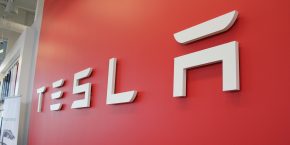
Elon Musk surprised the business world with one of the most common sense moves I’ve seen in a while – an offering to merge Tesla and SolarCity into a single company. Musk, this morning on a conference call, stated that he sees these companies coming together to become worth $1 trillion. For that to be a realistic valuation, Tesla and SolarCity are going to have to build more Gigafactories (Solar & Battery) and blow through the 1,000,000 car/year number. With a 10:1 earnings ratio, six Gigafactories each for solar & battery plus a 30% expansion of Fremont beyond 1,000,000 cars will do it. Here’s how…
If you’re considering solar, get a quote from multiple contractors at understandsolar.com. If you want feedback on the quote you get – either email me at john @ 9to5mac dot com or send a tweet.
Some of the largest and most advanced corporations in the world — the Finance industry — make it their career to determine company valuation. The very rough metric that I am going to use will be Revenue to Market Cap ratio – basically, how much money does the company take in per year compared to what the total value of the company is per their stock holdings. Using this metric has many issues – the main one is that it doesn’t necessarily talk about profit on those earnings or future growth considerations, however, it is the metric we will use today.

First, let’s talk about how much manufacturing capacity each wing (Solar Power, Energy Storage and Electric Cars) of this potential company might be able to build. As mentioned above, Tesla will now have three manufacturing facility types to manage – battery, solar module and car. The first two – battery and car – both have a scene stealing “Gigafactory.” These factories have become entities in the press all themselves – and neither of them is yet at full capacity. Currently, the Tesla Gigafactory plans a manufacturing capability of 35GWh/year of batteries (Musk has stated the Gigafactory can scale to 150GWh/year) and the SolarCity Gigafactory is aiming to produce 1GW of solar panels per year. Officially, Tesla expects to be at full capacity by 2020 and SolarCity by summer of 2017. More likely than not, Tesla will complete its construction long before 2020 to keep up with an expanded goal of 500,000 cars per year by 2018. And then, of course, we have a third set of factories that is building cars – and as mentioned above, Tesla is aiming for their Fremont factory to be able to produce at least 500,000 cars a year and potentially up to a million.

Rough estimates for revenue per unit manufactured are as follows – $250/kWh of batteries produced, $2.50/W for solar modules and an average sales price of $50,000 per car. Each of these numbers can be argued up and down. For instance, in SolarCity’s last quarter report the average $/W cost for installing solar power was $3.18/W. A Powerpack is currently listed, all installed, at $540/kWh. And Tesla cars are currently averaging about $80,000 per unit. My estimations are of prices based upon what I think will happen in the future – the price of batteries installed will fall, the price of installed residential will fall and far more people will buy Model 3 than the S or the X.
The next set of assumptions are based upon how batteries will be divided up among the various business units. My assumption is that 50% of the batteries in the Tesla Gigafactory will be sent to the vehicle line – at a rate of 80kWh per vehicle – and 50% will be used for energy storage. The second half of the batteries will go toward an average of four Powerwalls per solar power residential installation and 1,000kWh per commercial energy storage installation. The SolarCity Gigafactory will consume its modules at a rate of 8kW per installation. Of these assumptions, the greatest of them is that every solar power system will have a 26kWH battery installation – however, by the year 2020 this might become much more probable.

Bringing these numbers together we paint a picture of how $1 trillion can come to be. One Tesla Gigafactory can generate $4.3B in revenue selling 50% of the batteries into the storage market. One SolarCity Gigafactory drives $2.5B. And the second half of the Tesla Gigafactory will fill 218,750 cars with energy storage. Between those three business lines – if they grow in a rate balancing out the capacity of each Gigafactory – will be $17.8B. To move to $100B in revenue – and $1T in market cap with a 1:10 ratio – would mean 560% growth in each business unit. That’s a lot of growth – but not a crazy amount. I’d suggest you ask Ray Kurzweil or Tony Seba what they think about potential volume. As noted above, Elon Musk believes the current Gigafactory can grow to 150GWh/year production capacity – that one structure would meet 76% of battery manufacturing needs. And with the Fremont factory having a potential of 1,000,000 cars/year – we’re at 81% of manufacturing capacity. And let’s not forget that 375,000 people have given Tesla money for a car that doesn’t fully exist.
See, $1T in valuation – just like that. Is this possible? Can Musk deliver? Well, he did just land a rocket on a barge in the middle of the ocean.
[youtube https://www.youtube.com/watch?v=4jEz03Z8azc]
All of my assumptions above and the math can be seen in this Google Spreadsheet.
FTC: We use income earning auto affiliate links. More.



Comments